"The city will be stronger in future"
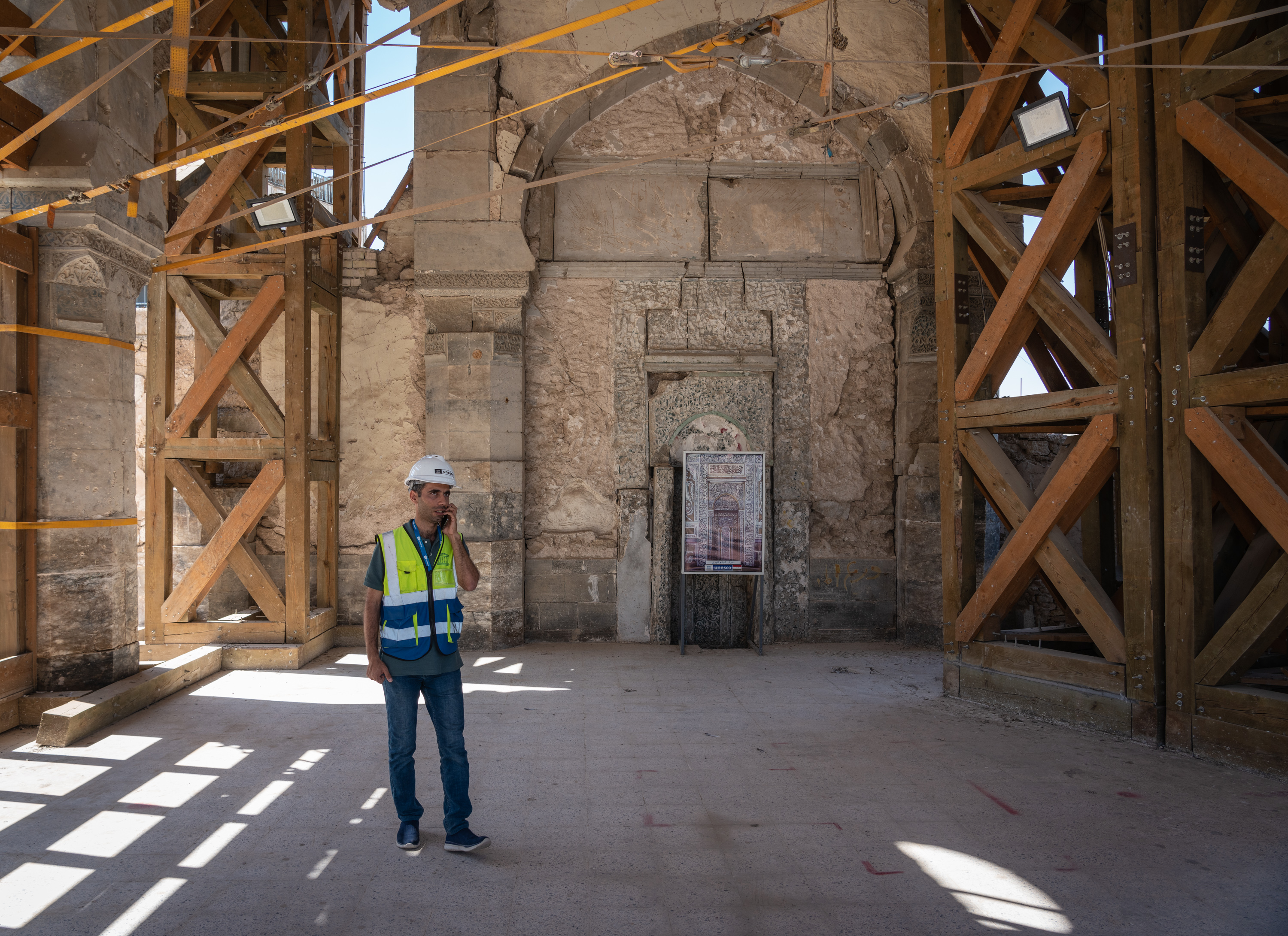
Bander Al-Ogaidy (25) was at his happiest in the first two years after the war. Then, he recalls, it didn’t take much to change something. Sometimes people would ask him, amidst the rubble and surrounded by the stench of corpses: "Why are you smiling?" And he would reply: "To give you hope."
That time has now passed. It’s already five years since people celebrated their freedom on the streets of the Iraqi city of Mosul. A major military offensive had driven the terrorists of the self-proclaimed Islamic State (IS) out of the area. History now dates the end of the war to the summer of 2017 – and for most people outside of Iraq, the story ends there. But in Mosul, the struggle to secure the city’s future goes on. What bombs destroy in seconds, takes years to rebuild. How to resurrect a home from the ruins?
Bander Al-Ogaidy is noticing that now, small gestures have less of an effect. The renaissance euphoria has dissipated. Instead, piles of rubble remind people of dark times they’d rather forget once and for all, as well as of the huge amount of work they still face.
But Bander Al-Ogaidy is undeterred, his broad smile is still in evidence, the sleeve of his T-shirt bears the slogan "Warning! No one can stop us". He had to learn personal strength at a young age. He lost his mother during the war, she had cancer but the family couldn’t take her out of the city for treatment. "I know my mother wouldn’t want me to show weakness in front of my two little brothers," he says.
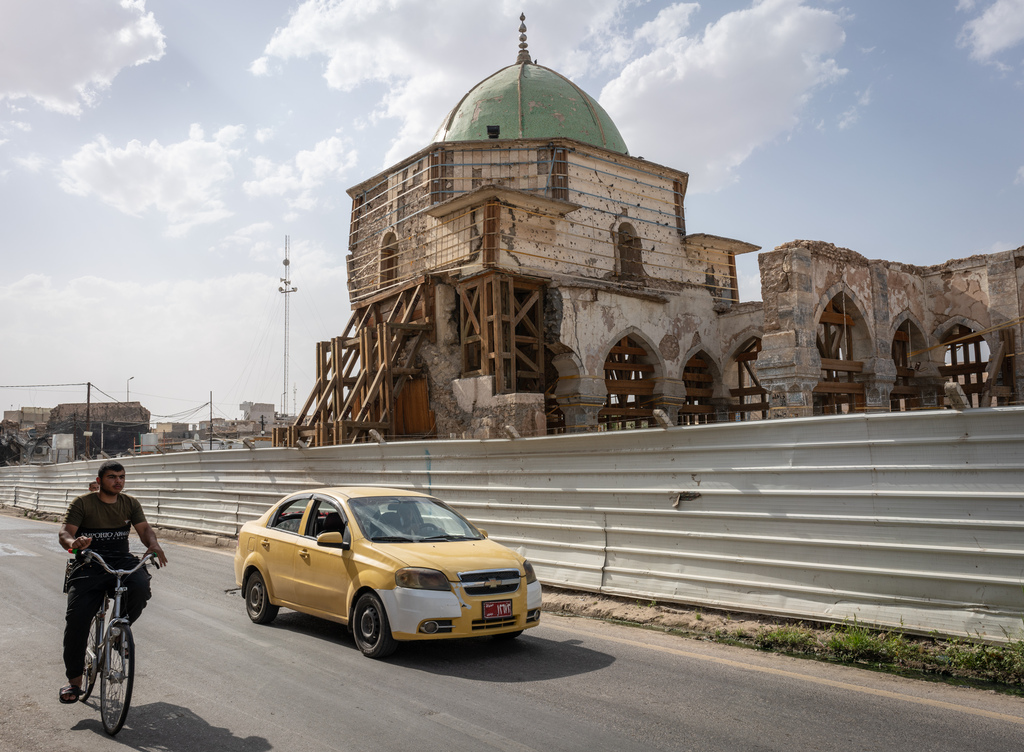
Ogaidy belongs to a group of young Moslawis who are focusing all their energies in one direction: forwards. They want their home to live and breathe again. When they talk about their projects, they bubble over with the drive and enthusiasm of people who’ve had enough of death and dying.
For three years, Mosul was a byword for horror. On 10 June 2014, IS terrorists hoisted black flags on government buildings. The city made headlines all over the world when the IS leader at the time Abu Bakr al-Baghdadi (1971–2019) declared his caliphate in the Great Mosque of al-Nuri in the heart of the Old Town.
Traumatic memories
The longer IS rule endured, the more difficult everyday life became for the local populace forced to live against their will under the governance of the terrorist organisation. Ogaidy recalls that in the final months of IS rule, there was barely anything to eat or drink. Sometimes he had to watch IS beheading people on public squares, or he saw corpses hanging from electricity poles. He wishes he could delete these images from his memory.
The extremists pillaged a cultural heritage going back millennia. Anything spared destruction was bombed in the offensive to recapture the city: begun by the Iraqi military in mid-October 2016, it lasted nine months and developed into the biggest urban battle since World War Two. Together with an international coalition, the Iraqi army first liberated the east of the city, before advancing into the Old Town in the west, where IS was holed up in the labyrinth of alleyways.
Just as now in the Ukraine war, the new battlefields in Mosul were streets, schools and people’s living rooms. It’s a development of huge concern to the International Red Cross: more and more, wars are being played out in town and city centres, leaving many civilians dead. Bombs don’t differentiate between good and evil. When the Iraqi government declared victory over IS in Mosul, in the Old Town in particular there was a lot of death and very little life. Volunteers arrived with shovels and barrows to recover bodies from the rubble. One artist created a statue to honour their efforts.
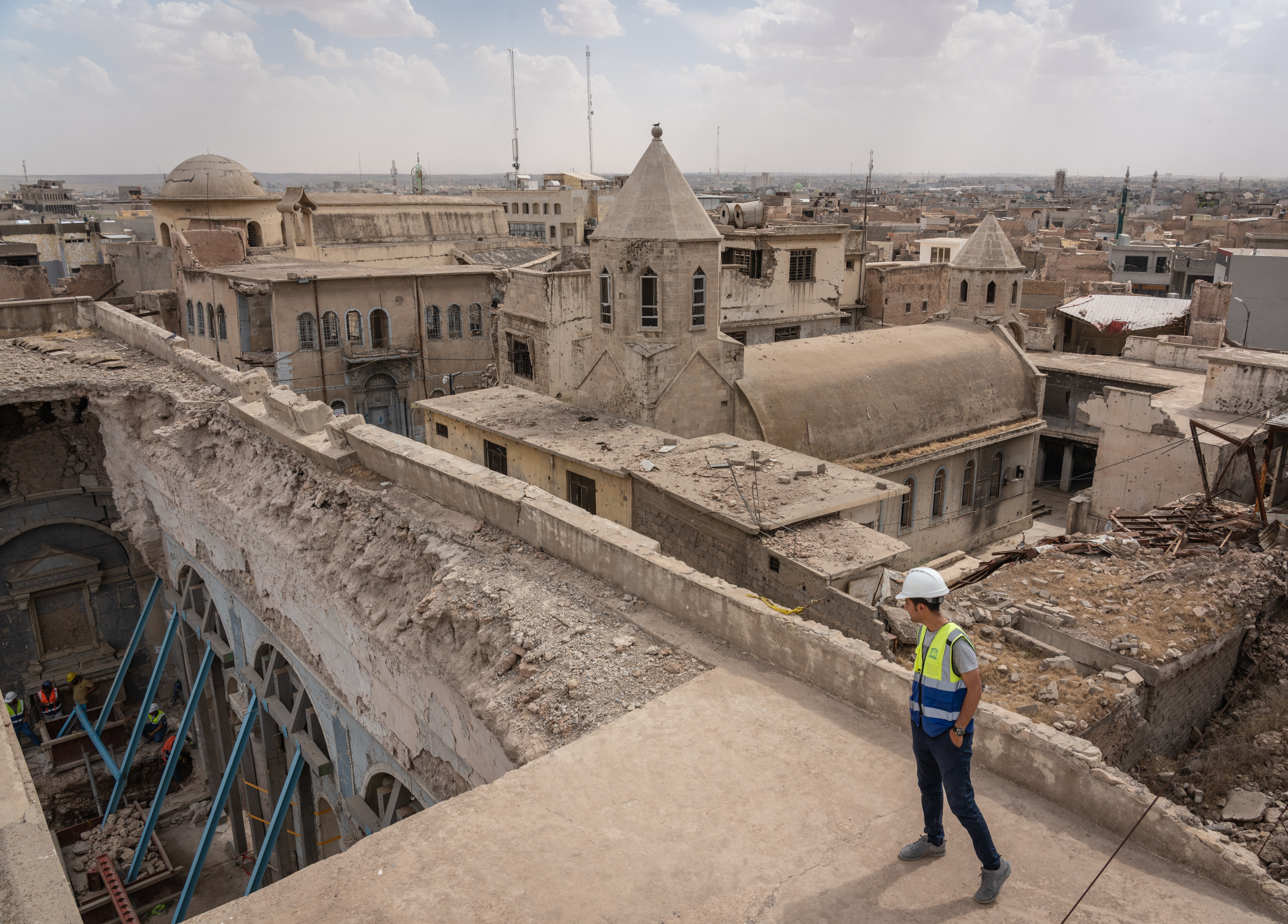
On this particular afternoon, Bander Al-Ogaidy is strolling through the narrow streets of the Old Town. Chickens cluck in the ruins, the facades are peppered with machine gun bullet holes, a tattered poster warns against booby traps. When a small boy runs past him with a plastic pistol, Ogaidy says: "You get the picture."
Search for identity
Ogaidy stops in front of a house painted light blue. This is where since 2019, with very little money and plenty of commitment, he and a team of young Moslawis have been running the cultural centre Bytna. The name means “our home” in Arabic. “The Old Town was so devastated that we thought this would be the best place to recapture the identity of Mosul,” he says. Bytna has made a name for itself in just a few years, the centre is regularly visited by tourists and Iraqi politicians. Even French President Emmanuel Macron got a tour of the one-hundred-year-old building last summer.
The team have turned the roof of the cultural centre into a cafe with a stage, where writers can read from their books, or the residents of Mosul can debate their future. In the rooms below, black-and-white pictures recall the heyday of the city that makes Ogaidy and most Moslawis feel proud.
He’s standing in a room full of old objects – water carafes, candlesticks, knives – and says, although they may look unspectacular, parents come here with their children and explain to them what everyday life used to be like. He points to a framed photo of three clerics sitting together: a Muslim, a Christian and a Jew. In the old days, people from a whole range of religions and ethnicities lived in Mosul.
That was a long time before IS. The Jews left Iraq in the 1950s. Many Christians fled in the decade after the U.S. invasion of 2003, when al-Qaida and other militias began to impose mafia-style controls on Mosul. Life in the city was overshadowed by murders, abductions and bomb attacks, some targeting religious minorities. Those who remained escaped at the very latest when IS captured Mosul. To this day, as few as 50 to 70 Christian families have returned.
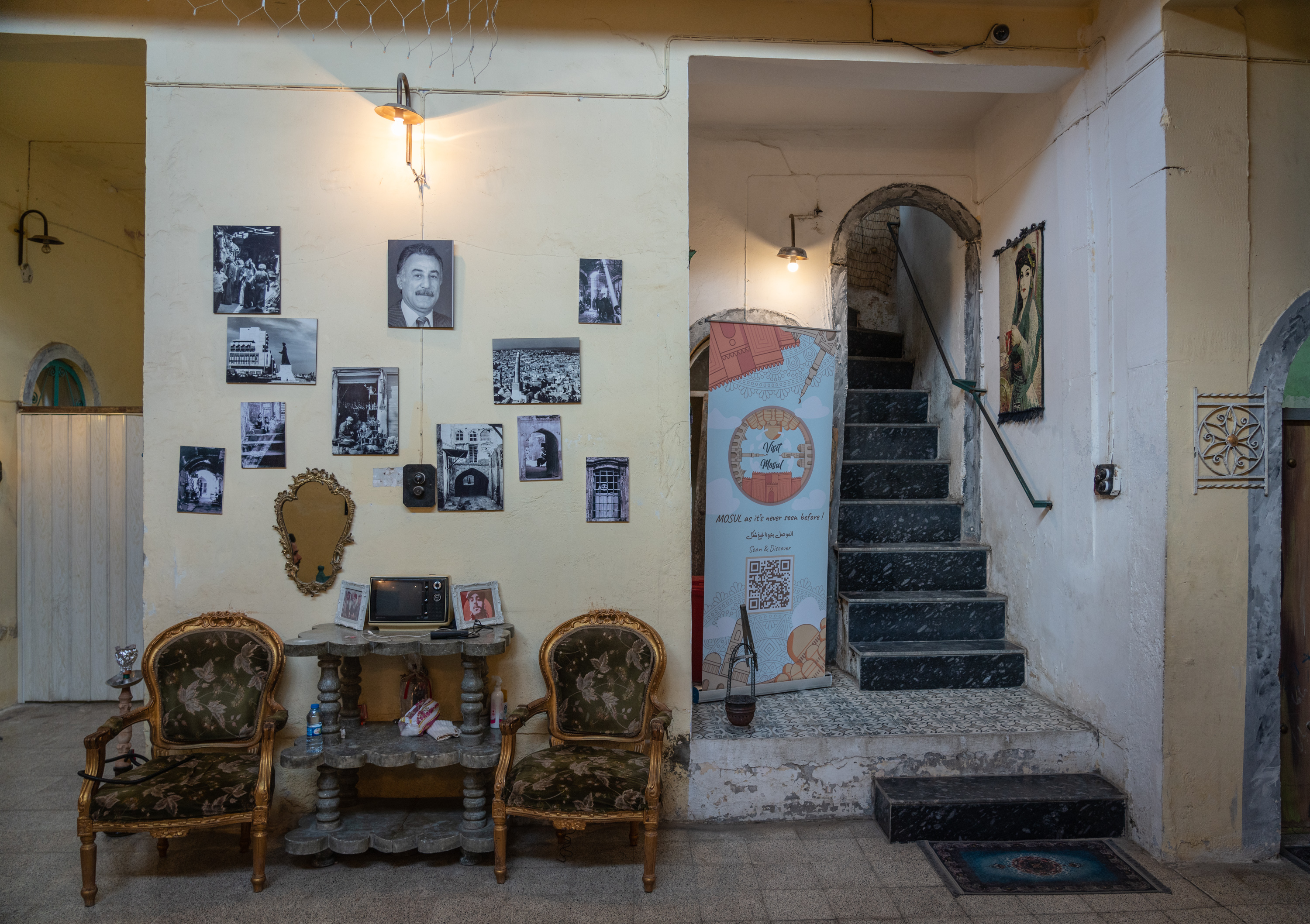
Ogaidy, himself a Muslim, hopes that more Christians will return soon. “Diversity was always one of Mosul’s strengths,” he says. Unlike the political factions in the capital Baghdad crippling the nation with their quarrels over power and God, Ogaidy belongs to a younger generation in Iraq committed to social dialogue.
More than just reconstructing buildings
Ten minutes’ walk from Bytna, Anas Zeyad (30), also a Muslim, is trying to create a space where Christians in Mosul can feel at home again. He’s head of the Al-Tahera Church construction site, where the Pope gave an address in early 2021, its ruins in the background.
"A church can attract people back to the area to remember and exchange stories, even if they’re sad ones. And it also gives rise to the hope of creating new, happy stories," says the civil engineer.
The scars of violence are still omnipresent. The walls that didn’t collapse are pitted with bullet holes; one bears the words "State of the Caliphate" in black spray paint. The church, barely recognisable as such, is due to be rebuilt by the end of 2023.
Its reconstruction is part of a UNESCO initiative aimed at reviving the cultural legacy and religious diversity of Mosul. The United Arab Emirates and the European Union are channelling millions into the project. After three years of preparation, reconstruction of the city’s major buildings began in March.
Anas Zeyad says that before the work could begin, workers had to clear 2,500 tonnes of debris and stabilise existing walls. They recovered almost 5,000 fragments of the church, all of which had to be sorted and catalogued. The aim is to reuse as much of the original material as possible. “It means a great deal to me to be able to say to the people that we’re reinstating a stone in the exact same place it was before,” says Zeyad. Another reason why the reconstruction is so complicated: it has to be forward-looking, but retrospective at the same time.
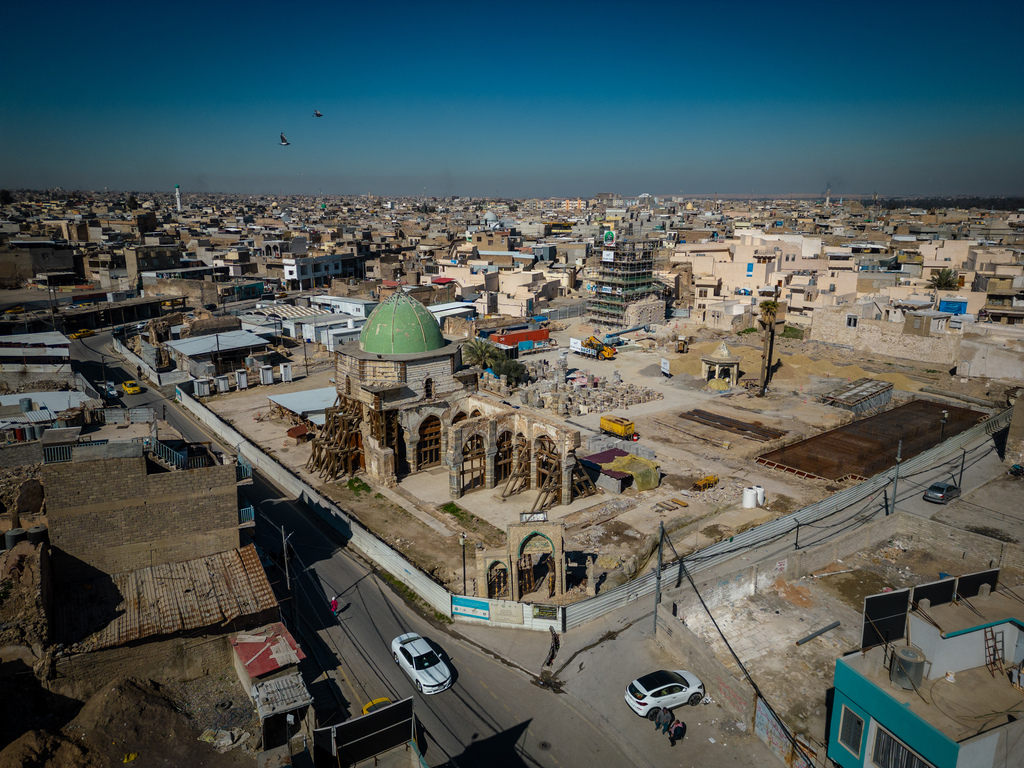
The civil engineer climbs the stairs up to a section of the church roof and surveys his home city. On the day IS invaded, he fled. He lived for a time in the northern Iraqi city of Erbil, where he was able to complete his studies. His colleagues, on the other hand, who remained in Mosul, lost three years. Zeyad returned as soon as the military liberated the city in 2017.
From the church roof, he sees a panorama of destruction. "Sometimes it feels overwhelming," he says. "Everything has to be rebuilt, not just a church."
The Old Town around him is in stark contrast to the eastern part of Mosul, which suffered much less damage. There, normal life appears to be flourishing again. Restaurants are open until late, neon signs flicker in the streets. A place that seems to have recovered itself, if it wasn’t for the children begging and hawking sweets to motorists at red stoplights. Many of their fathers are dead, their mothers have no work. How much suffering can a war cause; and how can yet more suffering be prevented?
Anas Zeyad looks from the church roof in a westerly direction, a view previously dominated by the famous al-Nuri Mosque minaret, blown up by IS shortly before its defeat. The tower used to be the emblem of Mosul. When Zeyad heard about its destruction, he began to weep. "Anyone who destroys the minaret destroys my city," he says. A building means more to people than an assembly of stones.
Winning back trust
The minaret stump opposite the Bytna cultural centre is also covered by the UNESCO initiative. The tower is due to be rebuilt by the end of 2023. A worker on the site says that over the past few years, when they were cataloguing pieces of rubble and stabilising the ground, people in Mosul sometimes asked: why are things not moving faster, why can’t we see the minaret yet?
Winning back trust is also part of the reconstruction process. Abdullah Mahmood (42), who works at the Mosul ministry of culture, knows that only too well. He stands in front of the minaret stump and explains how they’ve repeatedly involved the local population during the entire process. They conducted opinion polls on the construction plans and invited Moslawis to visit the cordoned-off site. Many of those employed by the UNESCO project are residents of Mosul. More than 3,000 local jobs were created; a third of the hired engineers are women.
Bander Al-Ogaidy at the Bytna cultural centre vividly recalls the day the minaret collapsed. "I couldn’t sleep for two nights afterwards," he says. The collapse of this iconic landmark is just one of the many moments he’d rather forget.
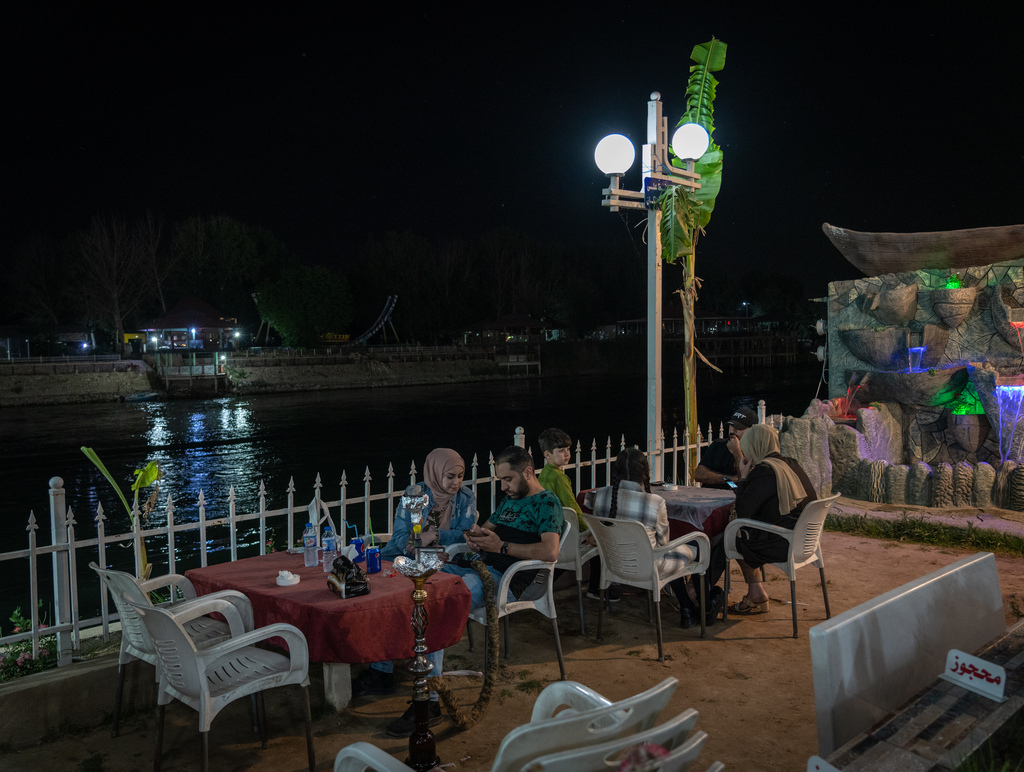
When images of corpses hanging from electricity poles pop into his head, he tells himself it’s just a nightmare. Ogaidy, a psychology student at the University of Mosul, works for an organisation that offers psychological support. It means a great deal to him to be able to help his community, he says. People have suffered enormous trauma, he adds. Sometimes, listening to their experiences is too much for him to bear.
But, like many people in Mosul, he emphasises that all the horror has produced some positives. The city, racked by murders and attacks even before IS came along, is now safe. And there’s been a major change in the mentality of its residents, he says. Mosul society is now much more open: women are driving cars, going to work and founding companies.
Civil engineer Anas Zeyad agrees, but he’s only cautiously optimistic. He says many companies and investors have pulled out and gone elsewhere. “It’s difficult to bring life back,” he says. But Bander Al-Ogaidy is confident: “Because the city has had to endure so much, it’ll be even more robust in the future.”
Whenever Ogaidy strolls through the Old Town, he often laughs into his camera and takes a selfie. Sometimes he’s standing in front of alleyways that have just been renovated, sometimes in front of a pile of rubble. He shares the photos on social media. The reconstruction of a devastated city is a perpetual push-and-pull between hope and the reminder of just how much work there is still to be done.
Karin Wenger (text) and Philip Breu (photos)
© Qantara.de 2023
Translated from the German by Nina Coon
Alaa Mohammed in Mosul contributed to this feature.